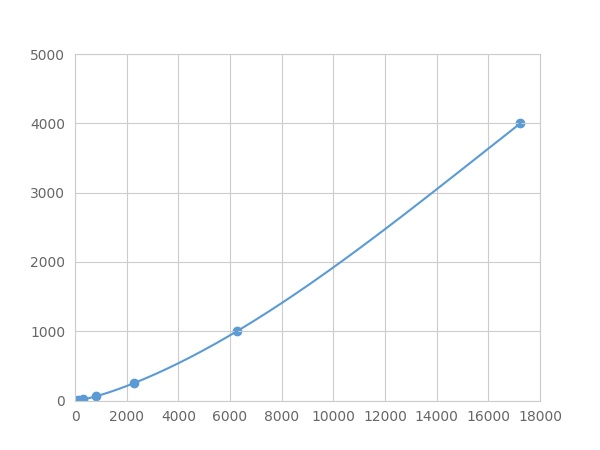Packages (Simulation)

Reagent Preparation

Image (I)
Image (II)
Certificate


Multiplex Assay Kit for Erythropoietin Receptor (EPOR) ,etc. by FLIA (Flow Luminescence Immunoassay)
EPO-R
(Note: Up to 8-plex in one testing reaction)
- Product No.LMA027Ra
- Organism SpeciesRattus norvegicus (Rat) Same name, Different species.
- Sample TypeSerum, plasma, tissue homogenates and other biological fluids.
- Test MethodDouble-antibody Sandwich
- Assay Length3.5h
- Detection Range3.91-4000pg/mL
- SensitivityThe minimum detectable dose of this kit is typically less than 1.303 pg/mL.
- DownloadInstruction Manual
- UOM 8Plex 7Plex 6Plex 5Plex 4Plex 3Plex 2Plex1Plex
- FOB
US$ 427
US$ 443
US$ 468
US$ 501
US$ 534
US$ 583
US$ 657
US$ 821
Add to Price Calculator
Result
For more details, please contact local distributors!
Specificity
This assay has high sensitivity and excellent specificity for detection of Erythropoietin Receptor (EPOR) ,etc. by FLIA (Flow Luminescence Immunoassay).
No significant cross-reactivity or interference between Erythropoietin Receptor (EPOR) ,etc. by FLIA (Flow Luminescence Immunoassay) and analogues was observed.
Recovery
Matrices listed below were spiked with certain level of recombinant Erythropoietin Receptor (EPOR) ,etc. by FLIA (Flow Luminescence Immunoassay) and the recovery rates were calculated by comparing the measured value to the expected amount of Erythropoietin Receptor (EPOR) ,etc. by FLIA (Flow Luminescence Immunoassay) in samples.
| Matrix | Recovery range (%) | Average(%) |
| serum(n=5) | 86-94 | 89 |
| EDTA plasma(n=5) | 97-104 | 101 |
| heparin plasma(n=5) | 83-96 | 88 |
| sodium citrate plasma(n=5) | 93-101 | 96 |
Precision
Intra-assay Precision (Precision within an assay): 3 samples with low, middle and high level Erythropoietin Receptor (EPOR) ,etc. by FLIA (Flow Luminescence Immunoassay) were tested 20 times on one plate, respectively.
Inter-assay Precision (Precision between assays): 3 samples with low, middle and high level Erythropoietin Receptor (EPOR) ,etc. by FLIA (Flow Luminescence Immunoassay) were tested on 3 different plates, 8 replicates in each plate.
CV(%) = SD/meanX100
Intra-Assay: CV<10%
Inter-Assay: CV<12%
Linearity
The linearity of the kit was assayed by testing samples spiked with appropriate concentration of Erythropoietin Receptor (EPOR) ,etc. by FLIA (Flow Luminescence Immunoassay) and their serial dilutions. The results were demonstrated by the percentage of calculated concentration to the expected.
| Sample | 1:2 | 1:4 | 1:8 | 1:16 |
| serum(n=5) | 94-101% | 78-103% | 79-92% | 91-102% |
| EDTA plasma(n=5) | 96-103% | 86-101% | 92-103% | 78-101% |
| heparin plasma(n=5) | 97-105% | 83-94% | 81-95% | 82-96% |
| sodium citrate plasma(n=5) | 85-92% | 86-101% | 91-105% | 97-105% |
Stability
The stability of kit is determined by the loss rate of activity. The loss rate of this kit is less than 5% within the expiration date under appropriate storage condition.
To minimize extra influence on the performance, operation procedures and lab conditions, especially room temperature, air humidity, incubator temperature should be strictly controlled. It is also strongly suggested that the whole assay is performed by the same operator from the beginning to the end.
Reagents and materials provided
| Reagents | Quantity | Reagents | Quantity |
| 96-well plate | 1 | Plate sealer for 96 wells | 4 |
| Pre-Mixed Standard | 2 | Standard Diluent | 1×20mL |
| Pre-Mixed Magnetic beads (22#:EPOR) | 1 | Analysis buffer | 1×20mL |
| Pre-Mixed Detection Reagent A | 1×120μL | Assay Diluent A | 1×12mL |
| Detection Reagent B (PE-SA) | 1×120μL | Assay Diluent B | 1×12mL |
| Sheath Fluid | 1×10mL | Wash Buffer (30 × concentrate) | 1×20mL |
| Instruction manual | 1 |
Assay procedure summary
1. Preparation of standards, reagents and samples before the experiment;
2. Add 100μL standard or sample to each well,
add 10μL magnetic beads, and incubate 90min at 37°C on shaker;
3. Remove liquid on magnetic frame, add 100μL prepared Detection Reagent A. Incubate 60min at 37°C on shaker;
4. Wash plate on magnetic frame for three times;
5. Add 100μL prepared Detection Reagent B, and incubate 30 min at 37°C on shaker;
6. Wash plate on magnetic frame for three times;
7. Add 100μL sheath solution, swirl for 2 minutes, read on the machine.
GIVEAWAYS
INCREMENT SERVICES
| Magazine | Citations |
| J Appl Physiol (1985). | Decreased plasma soluble erythropoietin receptor in high-altitude excessive erythrocytosis and Chronic Mountain Sickness Pubmed:25324511 |
| J Appl Physiol | Plasma soluble erythropoietin receptor is decreased during sleep in Andean highlanders with Chronic Mountain Sickness Pubmed:27125843 |
| FASEB JOURNAL | High-altitude hypoxia decreases plasma erythropoietin soluble receptor (sEpoR) concentration in humans |
| high altitude medicine & biology | High-Altitude Hypoxia Decreases Plasma Erythropoietin Soluble Receptor Concentration in Lowlanders Pubmed: 31977247 |
| Physiology Reports | Effect of exercise training in rats exposed to chronic hypoxia: Application for Monge's disease 33904648 |
| Catalog No. | Related products for research use of Rattus norvegicus (Rat) Organism species | Applications (RESEARCH USE ONLY!) |
| RPA027Ra01 | Recombinant Erythropoietin Receptor (EPOR) | Positive Control; Immunogen; SDS-PAGE; WB. |
| PAA027Ra01 | Polyclonal Antibody to Erythropoietin Receptor (EPOR) | WB; IHC; ICC; IP. |
| LAA027Ra71 | Biotin-Linked Polyclonal Antibody to Erythropoietin Receptor (EPOR) | WB; IHC; ICC. |
| MAA027Ra21 | Monoclonal Antibody to Erythropoietin Receptor (EPOR) | WB; IHC; ICC; IP. |
| MAA027Ra22 | Monoclonal Antibody to Erythropoietin Receptor (EPOR) | WB; IHC; ICC; IP. |
| SEA027Ra | ELISA Kit for Erythropoietin Receptor (EPOR) | Enzyme-linked immunosorbent assay for Antigen Detection. |
| LMA027Ra | Multiplex Assay Kit for Erythropoietin Receptor (EPOR) ,etc. by FLIA (Flow Luminescence Immunoassay) | FLIA Kit for Antigen Detection. |





